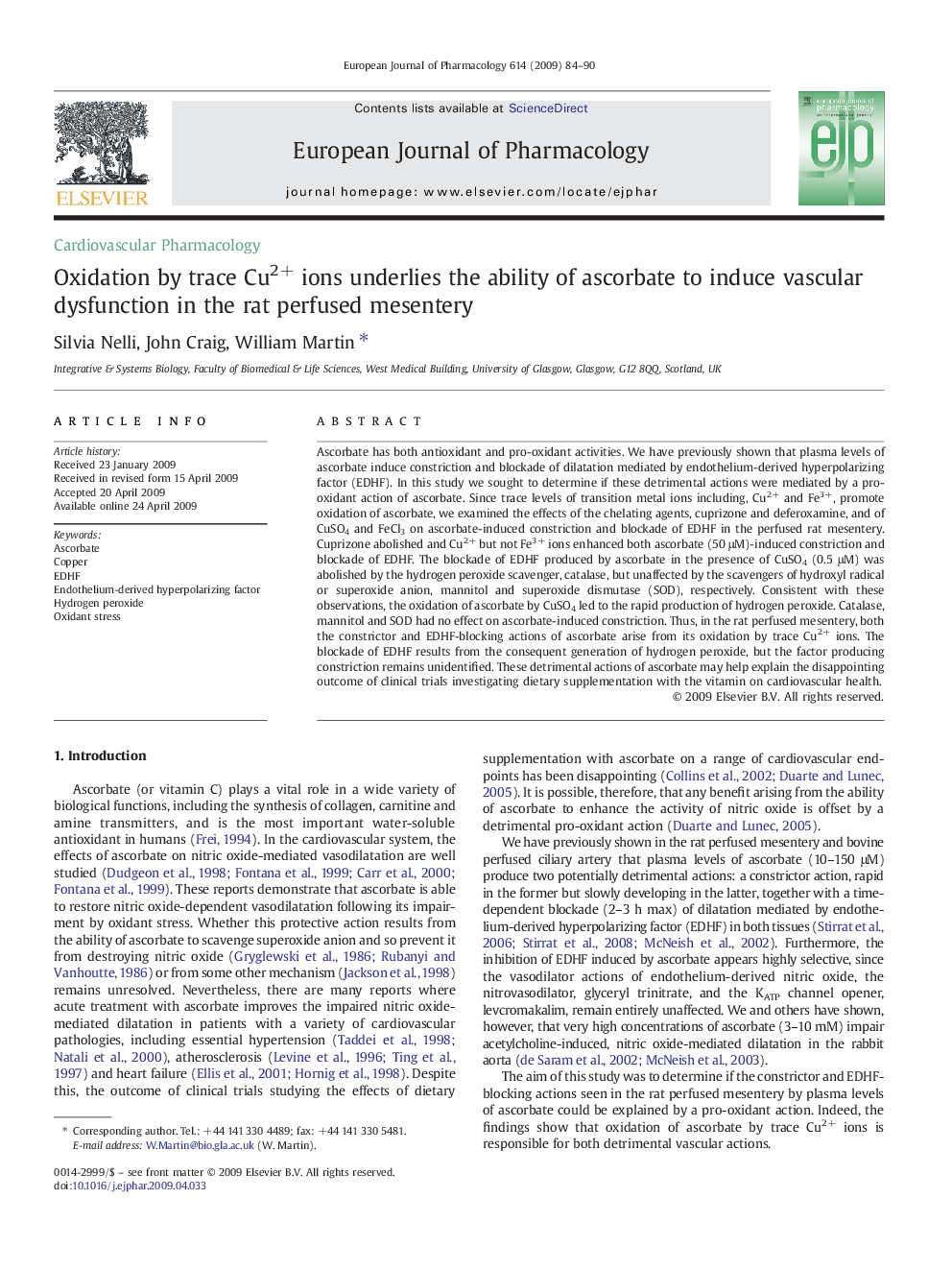| Article ID | Journal | Published Year | Pages | File Type |
|---|---|---|---|---|
| 5830627 | European Journal of Pharmacology | 2009 | 7 Pages |
Abstract
Ascorbate has both antioxidant and pro-oxidant activities. We have previously shown that plasma levels of ascorbate induce constriction and blockade of dilatation mediated by endothelium-derived hyperpolarizing factor (EDHF). In this study we sought to determine if these detrimental actions were mediated by a pro-oxidant action of ascorbate. Since trace levels of transition metal ions including, Cu2+ and Fe3+, promote oxidation of ascorbate, we examined the effects of the chelating agents, cuprizone and deferoxamine, and of CuSO4 and FeCl3 on ascorbate-induced constriction and blockade of EDHF in the perfused rat mesentery. Cuprizone abolished and Cu2+ but not Fe3+ ions enhanced both ascorbate (50 μM)-induced constriction and blockade of EDHF. The blockade of EDHF produced by ascorbate in the presence of CuSO4 (0.5 μM) was abolished by the hydrogen peroxide scavenger, catalase, but unaffected by the scavengers of hydroxyl radical or superoxide anion, mannitol and superoxide dismutase (SOD), respectively. Consistent with these observations, the oxidation of ascorbate by CuSO4 led to the rapid production of hydrogen peroxide. Catalase, mannitol and SOD had no effect on ascorbate-induced constriction. Thus, in the rat perfused mesentery, both the constrictor and EDHF-blocking actions of ascorbate arise from its oxidation by trace Cu2+ ions. The blockade of EDHF results from the consequent generation of hydrogen peroxide, but the factor producing constriction remains unidentified. These detrimental actions of ascorbate may help explain the disappointing outcome of clinical trials investigating dietary supplementation with the vitamin on cardiovascular health.
Keywords
Related Topics
Life Sciences
Neuroscience
Cellular and Molecular Neuroscience
Authors
Silvia Nelli, John Craig, William Martin,
